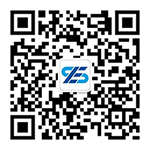With over 200 dedicated professionals, Beijing East IP has helped a full spectrum of clients – from startups to Fortune 500 corporations to domestic multinational companies – on their intellectual property issues in China.
Weekly China Brand Protection News – August 7, 2024

Weekly China Brand Protection News
August 7, 2024
1. A couple who held shares in multiple operating entities maliciously attached themselves to the goodwill of the “Skechers in Chinese” mark, and the court applied punitive damages amounting to CNY 7 million
The Beijing High Court has issued a second-instance judgment regarding the review of the cancellation of the “EDISON and Design” mark with reg. no. 11027501. The case involved the plaintiff Edison Opto Corporation (“Edison”), the defendant CNIPA, and the third party Eaton Electrical Holdings Limited. The court upheld the registration of the disputed trademark.
Edison is the registrant of the “![]() ” mark with reg. no. 11027501, which is approved for use on products in Class 9, including “light-emitting diodes (LEDs).” In addition to the disputed trademark, Edison has also applied for the “
” mark with reg. no. 11027501, which is approved for use on products in Class 9, including “light-emitting diodes (LEDs).” In addition to the disputed trademark, Edison has also applied for the “![]() ” mark with reg. no. 3538213, the “
” mark with reg. no. 3538213, the “![]() ” with reg. no. 11694379, and the “
” with reg. no. 11694379, and the “![]() ” mark with reg. no. 8126475, which are identical or similar to the disputed trademark, on Class 9 goods.
” mark with reg. no. 8126475, which are identical or similar to the disputed trademark, on Class 9 goods.
The second-instance court found that Edison had provided evidence showing the commercial use of the disputed trademark. Edison submitted trademark licensing agreements indicating that it had authorized Dongguan Edison Optoelectronics Co., Ltd. and Yangzhou Edison Optoelectronics Co., Ltd. to use the disputed trademark during the specified period. Purchase and sales contracts signed by these companies and third parties displayed the disputed trademark and the product name “LED module,” supported by bank receipts, invoices, etc. Screenshots from notarized WeChat articles from “Edison Optoelectronics” and the “Guangzhou International Lighting Exhibition” also showed the disputed trademark and related lighting products, with publication dates within the specified period, along with exhibition contracts and photos as evidence. Screenshots from notarized reports on relevant online media displayed the disputed trademark and LED lighting content. Special audit reports, product certificates, etc., also showed the disputed trademark. Despite the similarity between the disputed trademark and the “![]() ” mark, there was a distinction in the closing of the upper left corner of the letter “D,” and the marks shown in the evidence could be linked to the disputed trademark.
” mark, there was a distinction in the closing of the upper left corner of the letter “D,” and the marks shown in the evidence could be linked to the disputed trademark.
Considering all the evidence, it was proven that the disputed trademark had been promoted and sold on “LED modules” and other lighting products during the specified period. Although “LED module” is not a standardized product name, based on its function, usage, production department, sales channels, and consumer target, it belongs to the category of “light-emitting diodes (LEDs).” Thus, the evidence proved the genuine, lawful, and effective commercial use of the disputed trademark on “light-emitting diodes (LEDs).” Given that “light-emitting diodes (LEDs)” and the products for which the disputed trademark is approved, such as “light-emitting diodes, semiconductor components, photoelectric sensors, light dimmers (electrical),” belong to the same or overlapping classes in the CNIPA Goods and Services Classification, they constitute similar products. Therefore, the evidence supported maintaining the registration of the disputed trademark on all the products. Edison’s appeal was upheld by the court.
2. Court recognizes “Vienna Hotel in Chinese” as a well-known trademark, grants cross-class protection
The Guangdong High Court issued a final judgment in the trademark infringement dispute between Shenzhen Vienna International Hotel Management Co., Ltd. (“Shenzhen Vienna”) and Li. The court ordered Li to immediately cease the infringing activities and to pay Shenzhen Vienna a total of CNY 100,000 (USD14,000) in compensation for economic losses and reasonable expenses incurred in stopping the infringement.
In this case, Shenzhen Vienna’s registered trademark with reg. no. 7412838 is approved for services in Class 43, such as restaurants, hotels, bars, cafes, and accommodation (hotels, boarding houses), while the accused infringing goods include mattresses, pillows, bed frames, etc., which fall under Class 20 furniture goods. The two do not belong to the same goods or service items and differ in function, use, sales channels, and target consumers.
The second-instance court held that the no. 7412838 mark owned by Shenzhen Vienna consists of both graphic and textual elements, with the text “Vienna Hotel in Chinese” being the distinctive part. The accused mark “Vienna Hotel in Chinese” is identical to the distinctive part of the no. 7412838 mark. Li used the accused mark on goods that are not the same or similar to those for which Shenzhen Vienna’s well-known trademark with reg. no. 7412838 is approved. Considering the distinctiveness and reputation of the well-known trademark involved and the extent to which the relevant public overlaps, it can be concluded that the relevant public is likely to establish a considerable connection between the accused mark and Shenzhen Vienna’s well-known trademark. This association is sufficient to weaken the distinctiveness of the well-known trademark, falling under the circumstances of “misleading the public, causing possible damage to the interests of the registrant of the well-known trademark” as stipulated in Article 13(3) 3 of the Trademark Law, and also constitutes “other damage to the exclusive right to use a registered trademark” as stipulated in Article 57(7).
| Follow us on LinkedIn! Email: trademark@beijingeastip.com Tel: +86 10 8518 9318 | Fax: +86 10 8518 9338 Address: Suite 1601, Tower E2, Oriental Plaza, 1 East Chang An Ave., Dongcheng Dist., Beijing, 100738, P.R. China |
-
ABOUT US
-
PRACTICES
-
NEWS & EVENTS
-
Other Links
-
Contact Us
- info@beijingeastip.com
- +86 10 8518 9318
- +86 10 8518 9338


